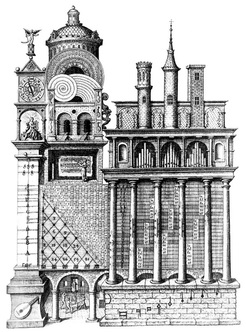|
Below you'll find a transcription of an Appalachian fiddle tune called Yew Piney Mountain. You'll also find a video of Ben Paley (whose version I transcribed) playing it at the Lewes Folk Club.
6 Comments
Today, we are guilty. Western society is rapidly losing the ability to remember. The reasons are many but our loss of such an important faculty is mainly due to the accessibility of information - everything you could possibly ever want to retain is available at swipe of a smartphone. But that's not true is it? You still have to remember your appointments, your shopping list, perhaps names of people you have just met at a dinner party... Your smartphone may even serve you there with calendar alerts, notes and quick-searches of Facebook. In which case, your memory may be so useless that, if you don't write yourself a reminder, you're guaranteed to forget to pick up the kids. The art of memory is a lost one, and one in dire need of a revival. Secret societies like KL7 (oops - just gave that one away!) treat it as a sub rosa skill of which they are the protectors. In truth, we all have the potential (a ~10TB human brain – apologies if you don't!) to remember vast quantities of information. All we need is a bit of practice - methods to make accurate memory a habit... and luckily there are a veritable plethora of them! Usually associated with training in logic and rhetoric, mnemotechnics have been around since the first millennium BCE, with early texts by authors such as Aristotle, Cicero and Quintilian. However, the one text from which we have gleaned the most is Rhetorica ad Herrenium (here credited to Cicero though of unknown authorship) – the first record of the "loci method", or architectural mnemonic. This technique relies on our inherently strong visual and spatial memory (see theory of natural selection for reasons why we didn't need to remember phone numbers but most definitely needed to remember locations of food, resources, shelter and a route home) and even boasts its own creation myth which is worth recounting here in brief. Supposedly, the poet Simonides of Ceos was the sole survivor when a dining-hall collapsed sometime in the fifth century BCE. He was asked to record who was buried beneath the rubble and when he closed his eyes to reconstruct the crumbled building in his imagination, he had an extraordinary realisation: he could remember exactly where each of the guests at the tragic meal had been sitting. Even though he had made no conscious effort to memorise the layout of the room, it had nonetheless impressed itself on his mind. Simonides recognised that if, instead of guests sitting about a banquet table, every great Greek dramatist had been seated in order of birth — he would have remembered them instead. He proposed that just about anything could be imprinted upon our minds, and kept in good order, simply by constructing a building in the imagination and filling it with imagery of what needed to be recalled. This imagined edifice could then be walked through at any time in the future and its contents would act as triggers. The concept has cropped up time and time again in popular culture, from such varied sources as Hannibal to Sherlock Holmes, and has been known by several different names; whether memory palace, mind attic et cetera...  The Method of Loci may use an aedificium as described above, or may be a well-known route that you walk to your local station, supermarket or, god(s) forbid, church. Whatever space you use, you'll need to reinforce your memory of it by visualising it whenever you get the chance. You also need "pegs" or distinguishing features of that locus and, of course, a ton of data you want to memorise - whether that be the poems of Walter de la Mare, the capitols of every country in the world or indeed your Chopin Liszt. It is time to firstly find an order for these items (this is vital - if it's a phone number it's obvious!), and then relate them to your pegs using strong visual links. For more detailed instruction see the texts linked above or read up on the methods utilised by memory "champions". I employed quotation marks there not because I lack respect for such dedicated practitioners but because I didn't want to give the impression that they were in any way special – anyone can improve their memory with a little effort!  I would recommend having a sprawling "palace" for those memories you want to remember permanently, with many wings, corridors and rooms to categorise different subjects (so you may have a poetry wing with a room for each poem) and a short sojourn around your house or somewhere you know very well to act as your slate to remember things in a more temporary fashion (with bizarre images of your groceries doing unspeakable things in the kitchen). Personally, I have opted for the British Museum for the former as I am familiar with it but don't go as often as I used to so my images are not in danger of being scrambled. This can also act as a visualisation of one's mind at work and I particularly enjoy the open 'reading room' as my mapping of conscious thought. It enables meditation at a moment's notice and indeed, such spatial techniques are used by those seeking to focus their minds in this way.  As a last word, I would like to recommend another book, namely Mastermind by psychologist Maria Konnikova. It is a very informative read and will enlighten you to the great number of experiments that go on involving memory skills and those parts of the brain that contribute most significantly spatial learning: the medial parietal cortex, retrosplenial cortex, and the right posterior hippocampus. Also, as is to be expected there are several practical step-by-step guides on Lifehacker for anyone who's interested. |
BlogThis is where I post tunes I've transcribed and bits & pieces I find interesting. A few old articles have been transferred from my old blog, The Daily Orator.
CategoriesArchives
May 2020
|
Products |
Services |


 RSS Feed
RSS Feed
